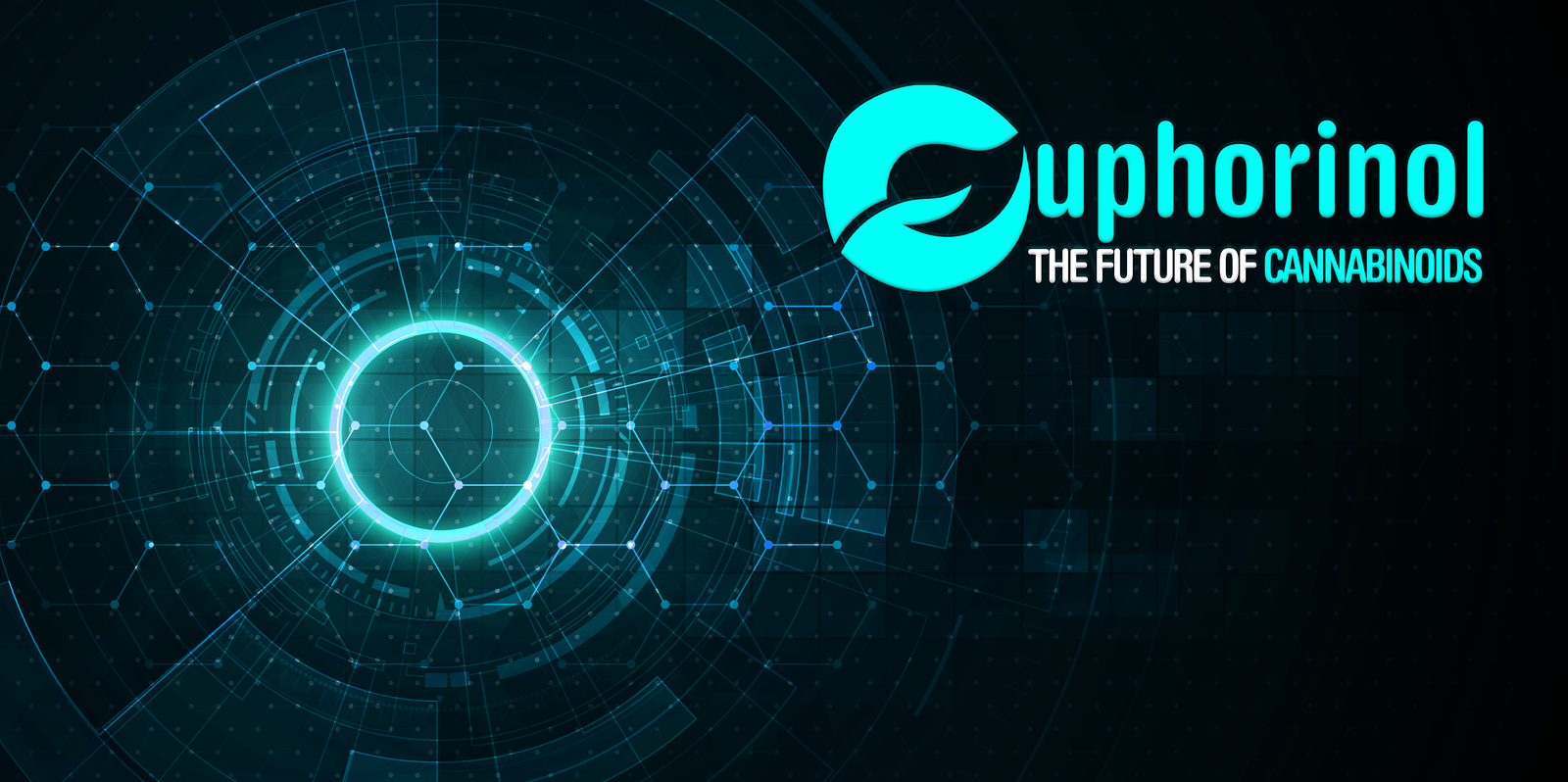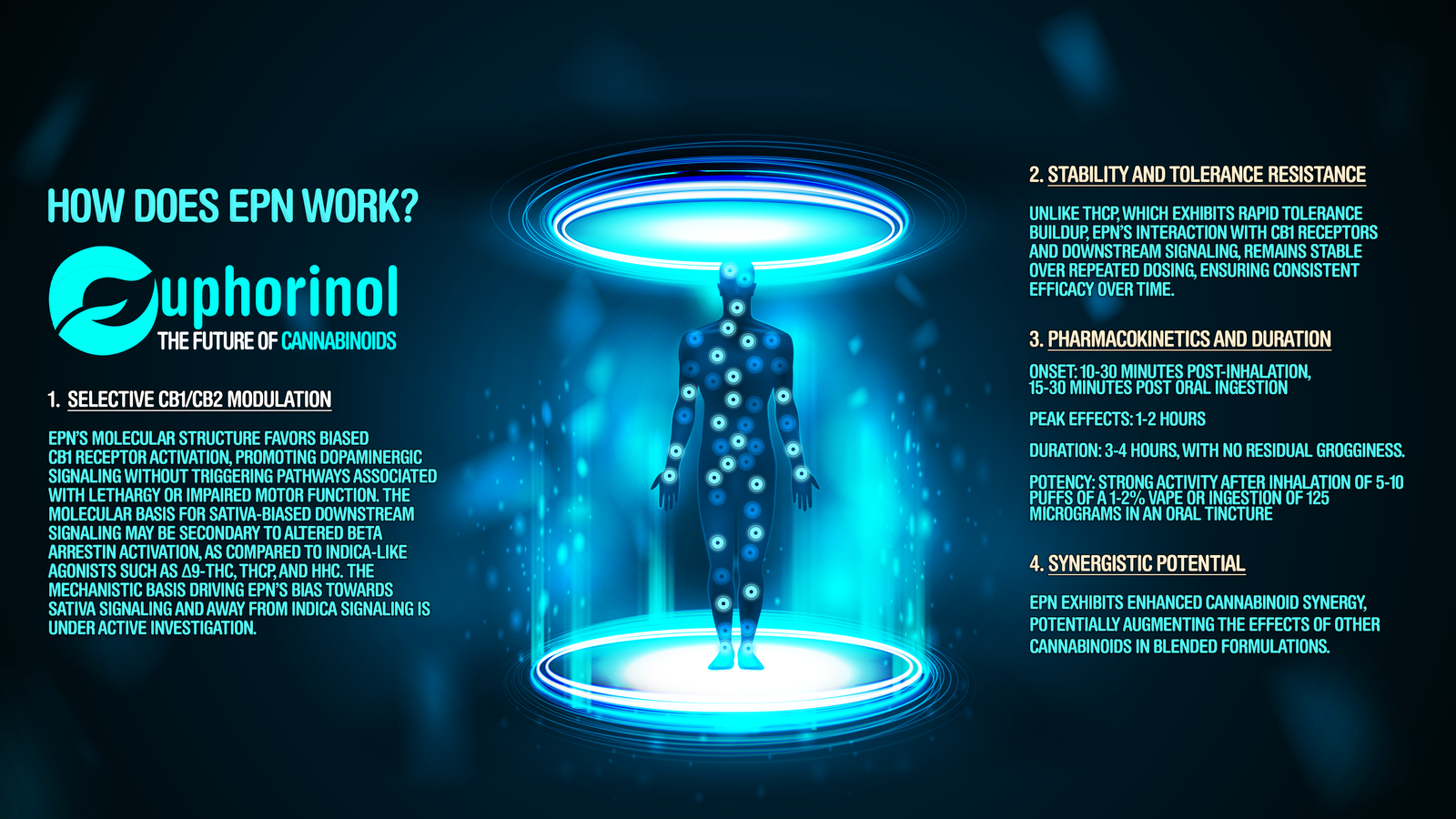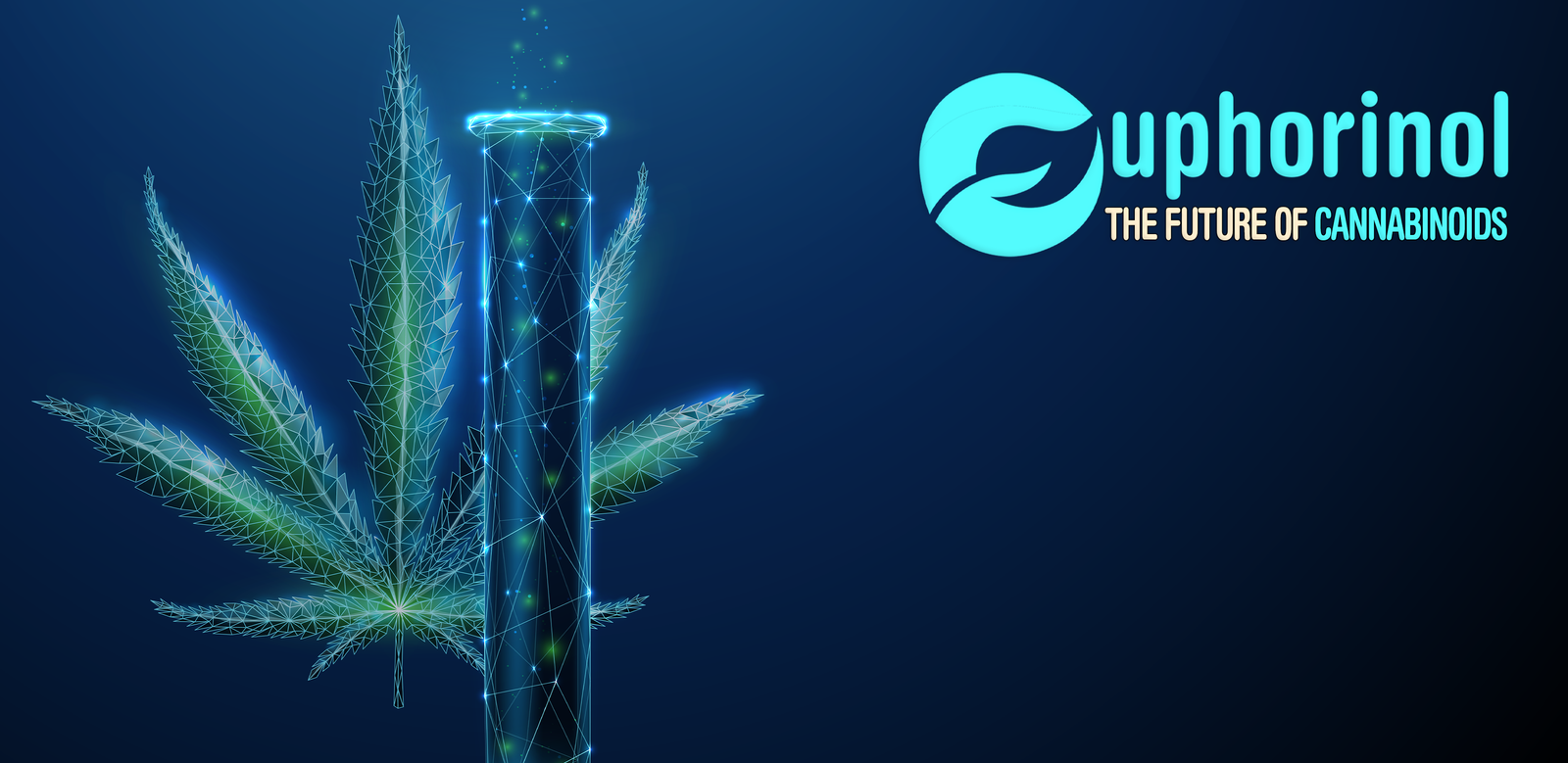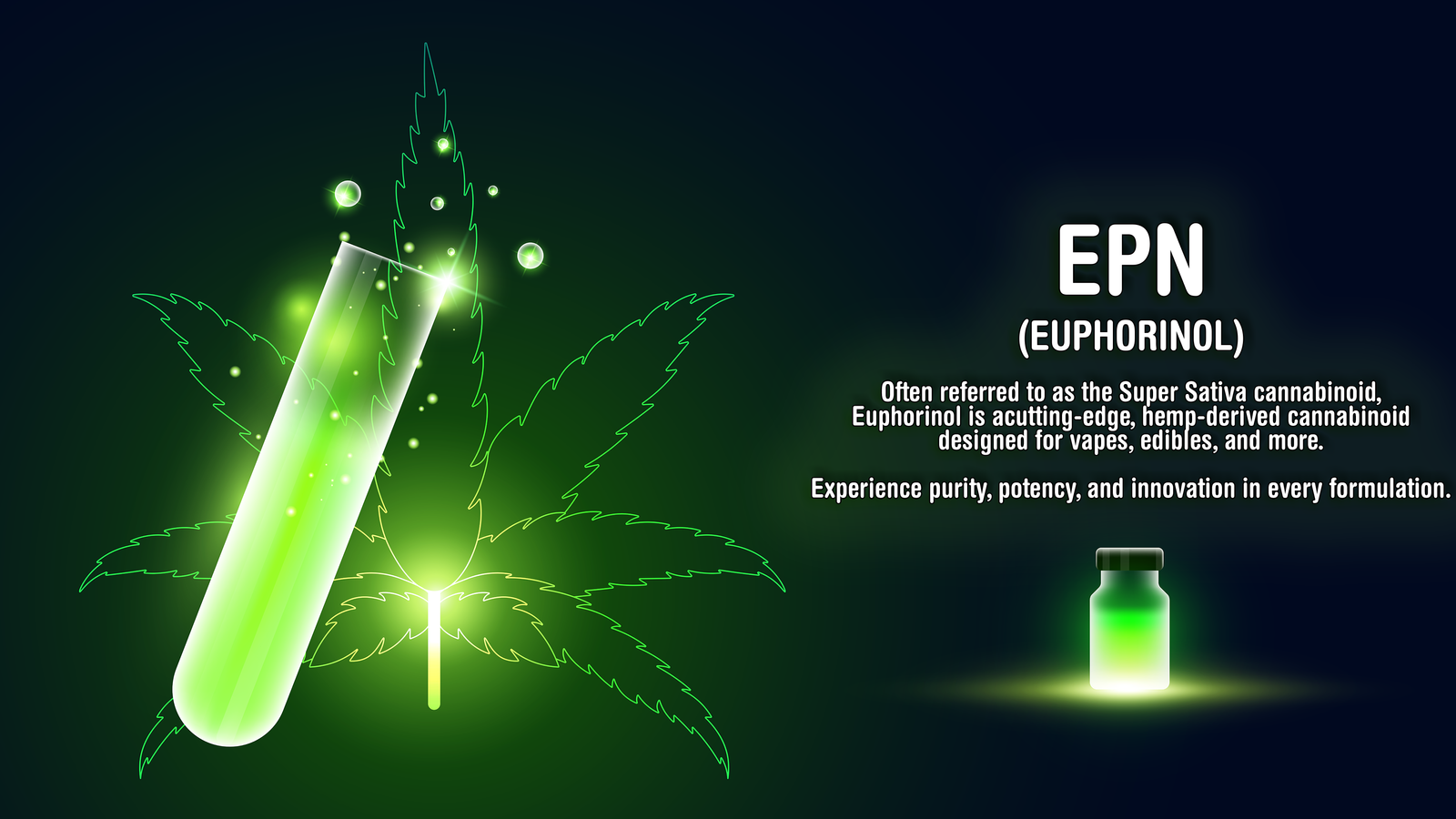Abstract
Euphorinol (EPN) represents a breakthrough in cannabinoid technology, offering a Sativa
selective pharmacological profile. Unlike conventional cannabinoids, EPN delivers a functional,
clear-headed euphoric “Sativa”-like effect. This contrasts with the classic behavior of
psychoactive cannabinoids that are notable for inducing profound Indica-like effects of lethargy,
sedation, immobility, and stupor. In further contrast to classic psychoactive cannabinoids, EPN
does not trigger anxiety, paranoia, and it does not lose its potency over time in frequent users. This
article explores EPN’s molecular characteristics, receptor activity, pharmacokinetics, and
potential applications within the cannabinoid industry.
Introduction
The global cannabinoid market is evolving rapidly, with increasing demand for compounds that
provide predictable, repeatable, and functional psychoactive effects. Whereas Δ9-THC, THCP,
and HHC exhibit varied binding affinities to the classic CB1 and CB2 receptors, these agents often
produce sedation, disorientation, anxiety, and increased tolerance with repeated use. EPN now
is introducing a new class of semi-synthetic cannabinoids that selectively engage CB1 receptor
pathways associated with euphoria and mental clarity while minimizing depressant effects
traditionally linked to THC-based analogs.
Pharmacological Properties of Euphorinol (EPN)
- Selective CB1/CB2 Modulation
EPN’s molecular structure favors biased CB1 receptor activation, promoting dopaminergic
signaling without triggering pathways associated with lethargy or impaired motor function. The
molecular basis for Sativa-biased downstream signaling may be secondary to altered beta
arrestin activation, as compared to Indica-like agonists such as Δ9-THC, THCP, and HHC. The
mechanistic basis driving EPN’s bias towards Sativa signaling and away from Indica signaling is
under active investigation. - Stability and Tolerance Resistance
Unlike THCP, which exhibits rapid tolerance buildup, EPN’s interaction with CB1 receptors and
downstream signaling, remains stable over repeated dosing, ensuring consistent efficacy over
time. - Pharmacokinetics and Duration
Onset: 10-30 minutes post-inhalation, 15-30 minutes post oral ingestion
Peak effects: 1-2 hours
Duration: 3-4 hours, with no residual grogginess.
Potency: strong activity after inhalation of 5-10 puffs of a 1-2% vape or ingestion of 125
micrograms in an oral tincture - Synergistic Potential
EPN exhibits enhanced cannabinoid synergy, potentially augmenting the effects of other
cannabinoids in blended formulations.
A Novel Approach to Cannabinoid Therapeutics
Current cannabinoid formulations often present challenges related to impairment,
unpredictability, and adverse physiological responses. EPN’s Sativa-selective pharmacology
eliminates many of these concerns, making it a promising candidate for:
- Cognitive Enhancement – Supports focus and mental clarity without intoxication
• Mood Elevation – Induces euphoria without overstimulation or anxiety
• Functional Use – Enables social engagement and productivity, contrasting with traditional
THC’s sedative effects
Market Potential and Applications
EPN is currently being introduced in vape formulations, tinctures, and gummies, with further
applications in nutraceuticals, beverages, and functional wellness products. Given its patent
pending status and legal clarity, early adoption by leading cannabinoid brands presents an
opportunity to establish market differentiation in the next evolution of cannabis-derived
products.
Conclusion:
EPN represents a paradigm shift in cannabinoid pharmacology, offering a consistent, non
sedative, functional euphoria that stands apart from traditional THC analogs. With its patent
pending structure, stable receptor affinity, rapid onset of action, and absence of tolerance, EPN
is positioned to become a cornerstone in the next generation of cannabis innovation.
For scientific inquiries, product availability, partnership and wholesale opportunities, contact:
Joe Littell / Gilded Extracts.






